This series highlights the fascinating and marvelous ecology of grassland bird nesting, written by Madison Audubon education director Carolyn Byers. Click here for all Into the Nest posts.
““I think, that, if required, on pain of death, to name instantly, the most perfect thing in the universe, I should risk my fate on a bird’s egg.”
”
Into the Nest: There is nothing so beautiful as a bird's egg
Last week I told you that bird nests were my favorite things. I lied. Eggs are lovely packages of potential, waiting with bated breath for their moment. The variety of egg sizes, shapes, colors, and textures is staggeringly beautiful. A nest is impressive in and of itself, but when it is softly cradling a clutch of eggs-- the combination is intrinsically perfect.
This post is entirely devoted to eggs. We hope you enjoy!
A grasshopper sparrow sits tight on her eggs during a nest check. Can you spot her eye? Everything about this nest and bird is working to keep those eggs camouflaged and safe. Photo by Carolyn Byers
Egg Laying:
Most birds lay their eggs in the early morning. This is likely because carrying a large, fragile egg within the oviduct throughout the day could be risky! Gravid female birds (those carrying eggs) are weighted down by their cargo, and may have trouble avoiding predators. Laying an egg is also a vulnerable time for a bird, and early morning laying may minimize their chance of being disturbed by predators (Gill 2007).
Generally, birds lay one egg each day. Because eggs are so large relative to a bird’s body, there is only room for one in the oviduct at a time (Gill 2007). If a nest is destroyed by predators, bad weather or an accident early on in the season, most species of birds will begin a new nesting attempt immediately.
A female red-winged black bird emerges from her hidden nest. Photo by Arlene Koziol
Clutch size:
A “clutch” is the number of eggs produced by a bird during one nesting attempt. Generally, birds will lay as many eggs as they can reasonably expect to raise at a time. Some birds will only raise one nest in each season, while others may try to raise two or three.
Birds that have precocial young will have larger clutch sizes than those with altricial young simply because they are easier to care for. Birds that raise multiple broods of chicks in one breeding season may have fewer eggs per clutch later in the season. This could be because the female’s fitness decreases as the season progresses or because food resources can be scarce in August (Gill 2007).
Precocial young (pronounced "pre-KŌSH-el"): chicks are mobile and able to feed themselves soon after hatching -- think upland sandpiper or wild turkey.
Wild turkey chicks are not just adorable, they're also very mobile and capable, even hours old as in this photo, typical of precocial young. Photo by Carolyn Byers
Altricial young (pronounced "al-TRISH-el): chicks born helpless and require extensive care from parents before they are able to leave the nest -- think American robin or Henslow’s sparrow.
Grasshopper sparrows are born blind and weak; classic atricial young. Photo by Carolyn Byers
Egg coloration:
The wide variety of egg colors and patterns is one of the reasons so many people are fascinated with them. They are beautiful -- but the science behind egg coloration is very cool too!
An egg receives its color during the very end of its trip through the oviduct. The shell glands deposit colors while the shell itself is being constructed, producing the base or background color. Then blotches, scrollwork, or speckling is added when the outer cuticle layer is produced (the cuticle is a transparent coating of protein molecules that cover the entire shell; Gill 2007).
Only two pigments are used to produce the wild rainbow that birds’ eggs come in. One is blueish green (biliverdin), the other is reddish brown (protoporphyrin). By mixing these two pigments together in different quantities and working with the white backdrop of an egg, you can achieve blues, greens, yellows, creams, browns, and everything in between.
Check out National Audubon’s excellent article about egg color that also explains how eggs are formed: Cracking the Code on Egg Coloration.
The beautiful pigmentation of bird eggs comes from just two pigments. Photo by Greenleaf & Blueberry
Grassland bird eggs are stunning. Many have a white or cream background with markings in shades of brown. Henslow’s, grasshopper, savannah, and song sparrows all follow this pattern. Upland sandpiper eggs are buffy or olive in color, with many different shades of brown speckling on each egg. Robins and dickcissels have unobscured blue eggs, while red-winged blackbirds and clay-colored sparrows have bluish eggs with markings on them.
Grassland bird eggs come in a variety of shapes, sizes and colors. (If using a smartphone or tablet, turn your screen to landscape mode to view photo captions.) I captured all of these photos during my thesis work in 2010 and 2011. All of the information about egg size and clutch from Harrison 1978. Click on the images to advance photos.
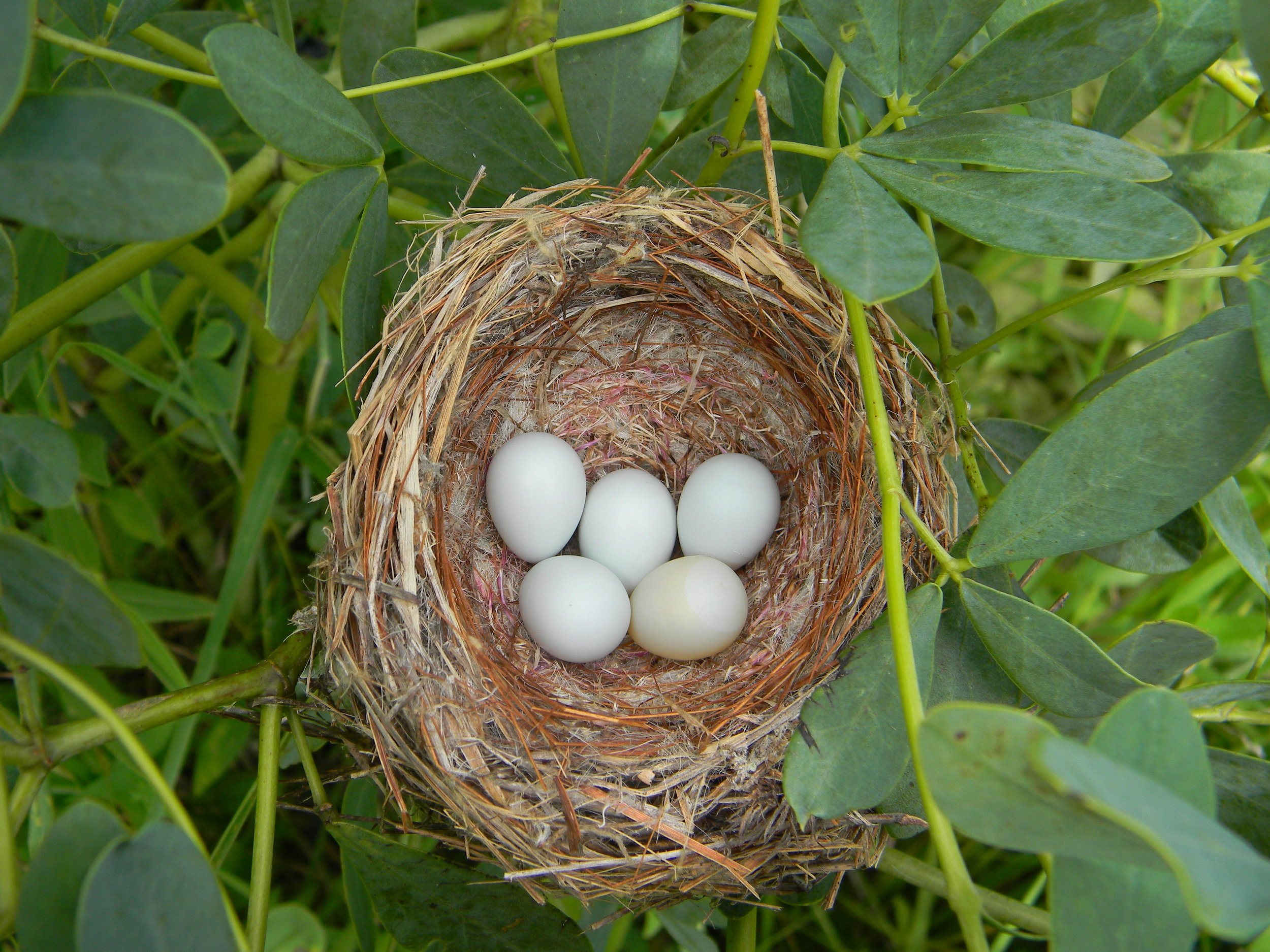
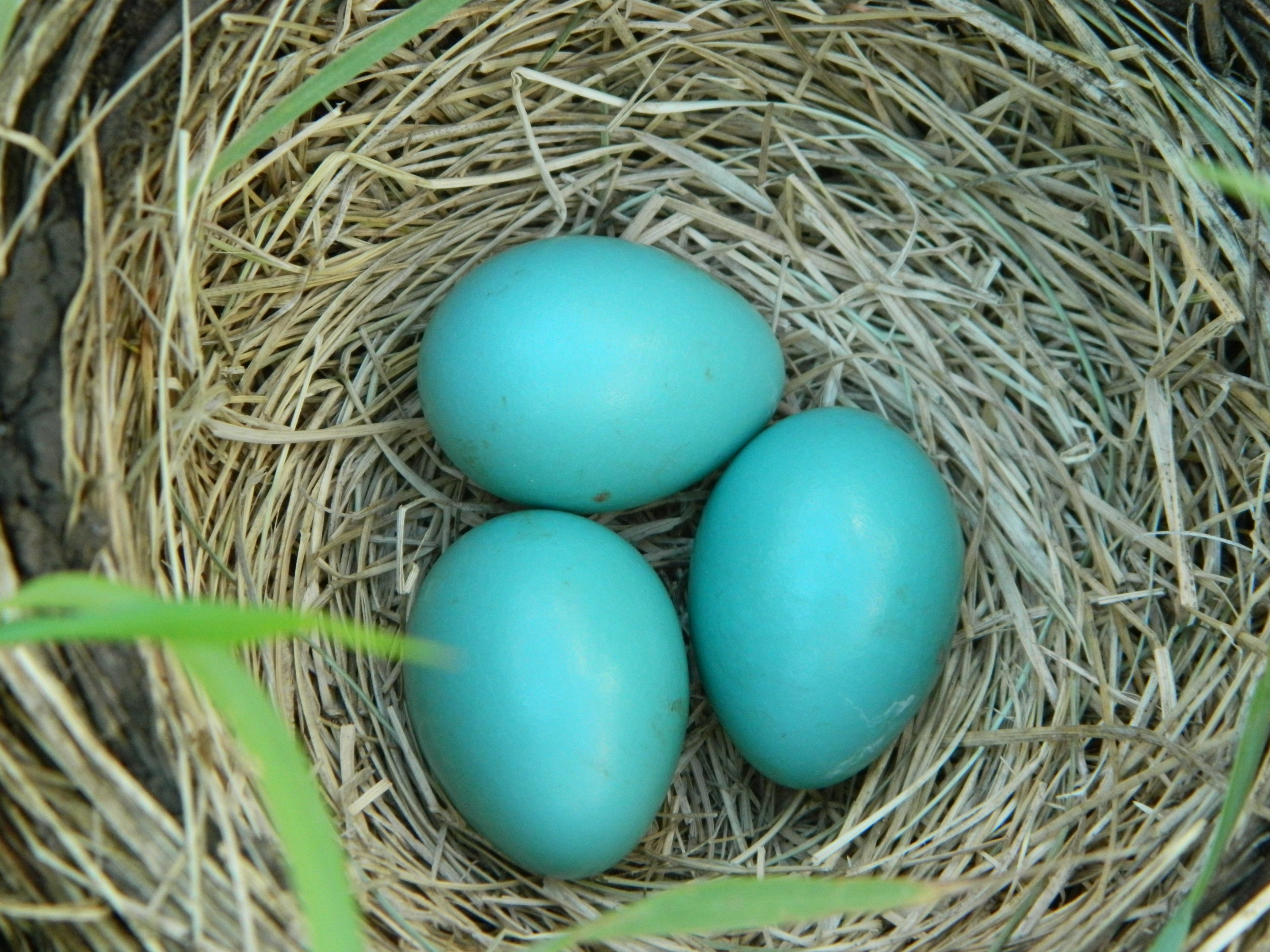
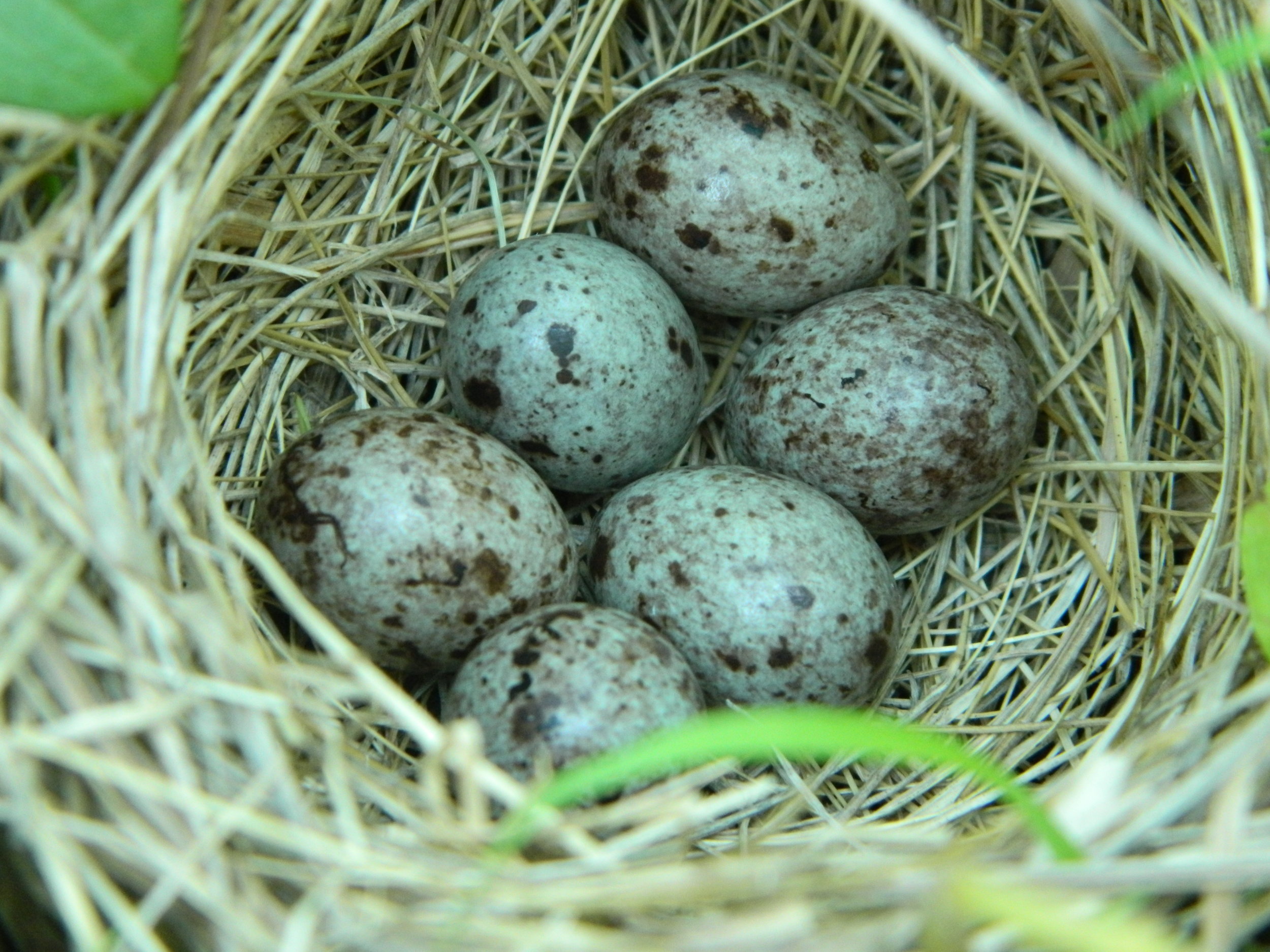
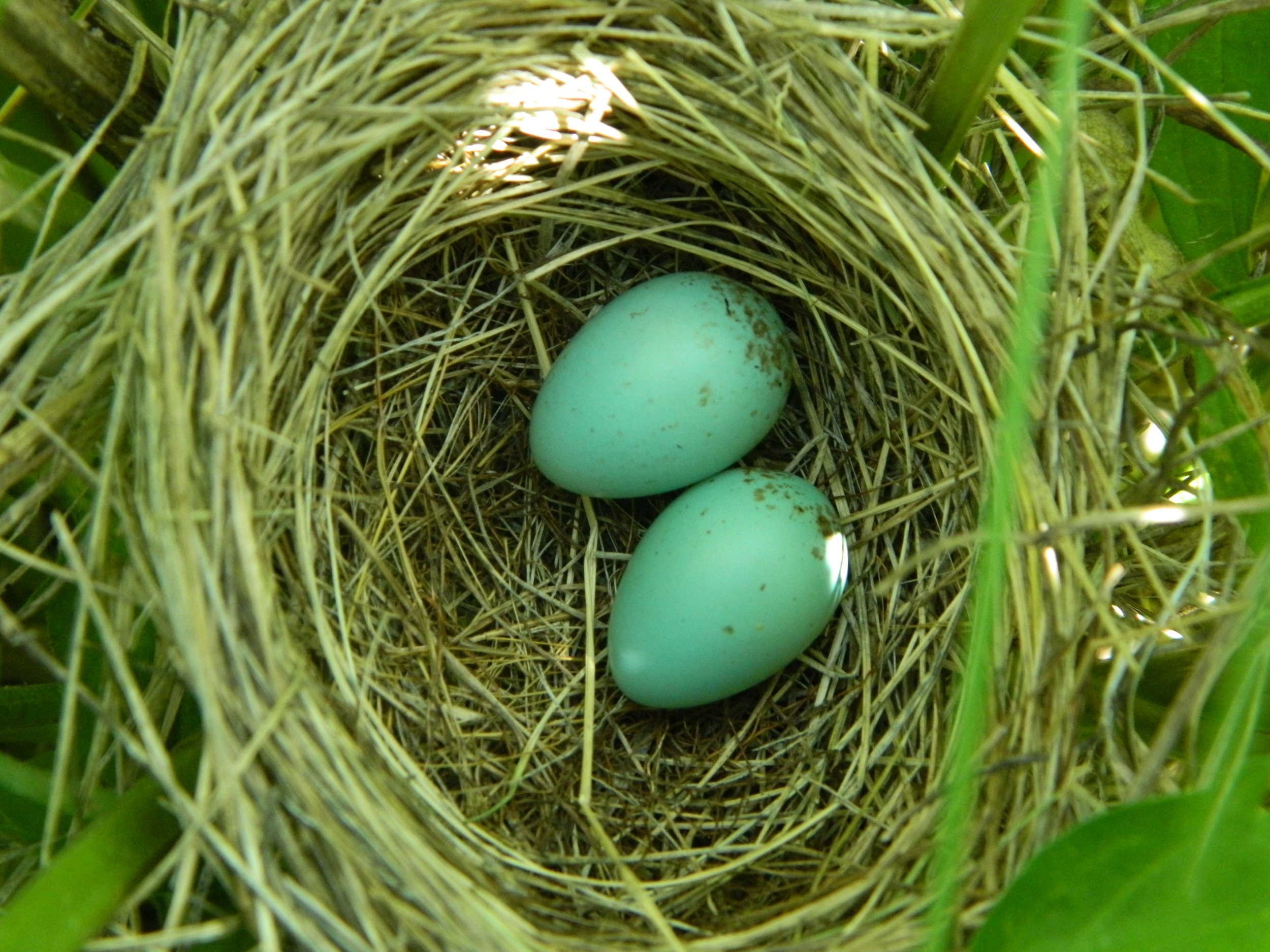
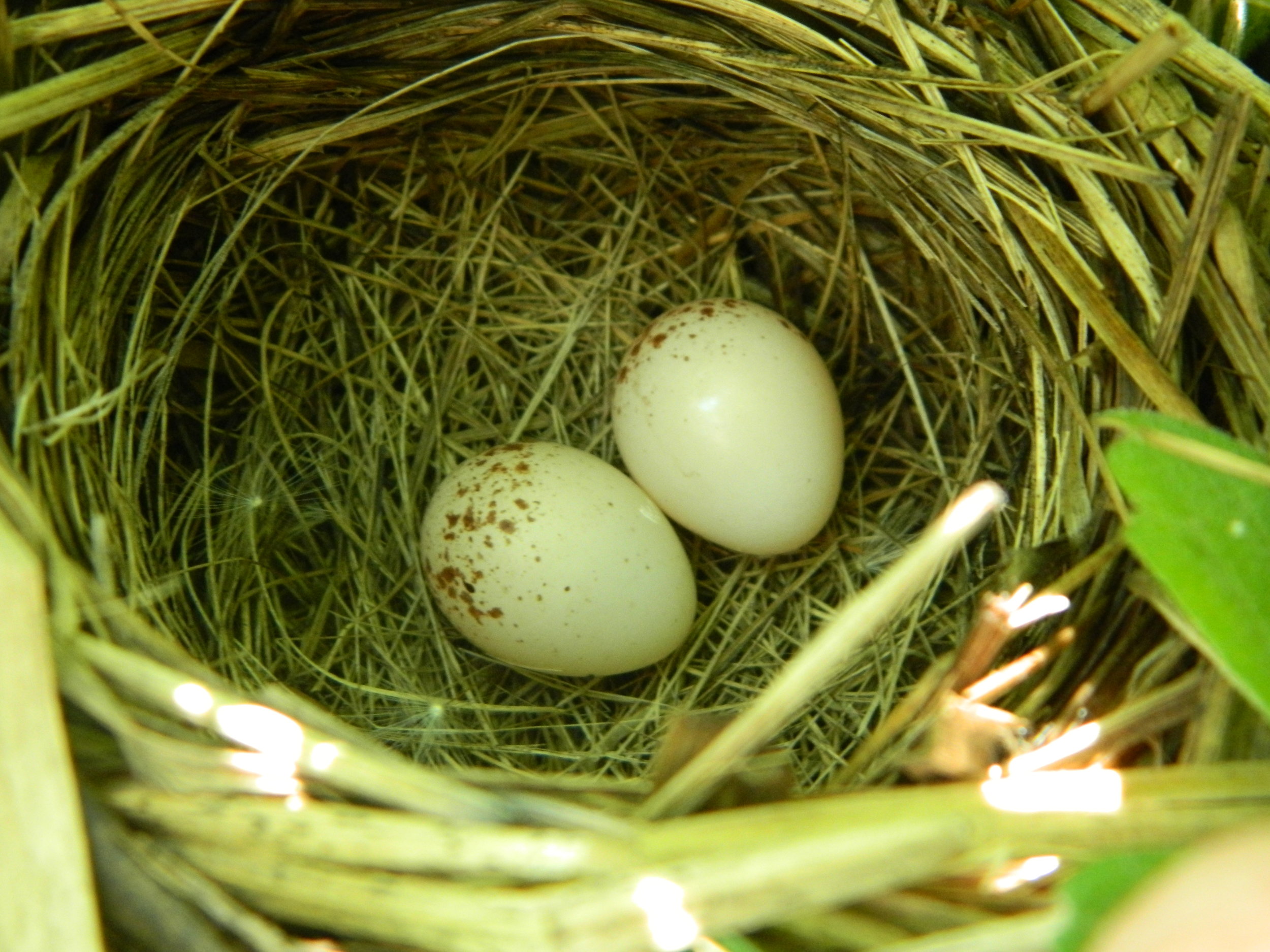
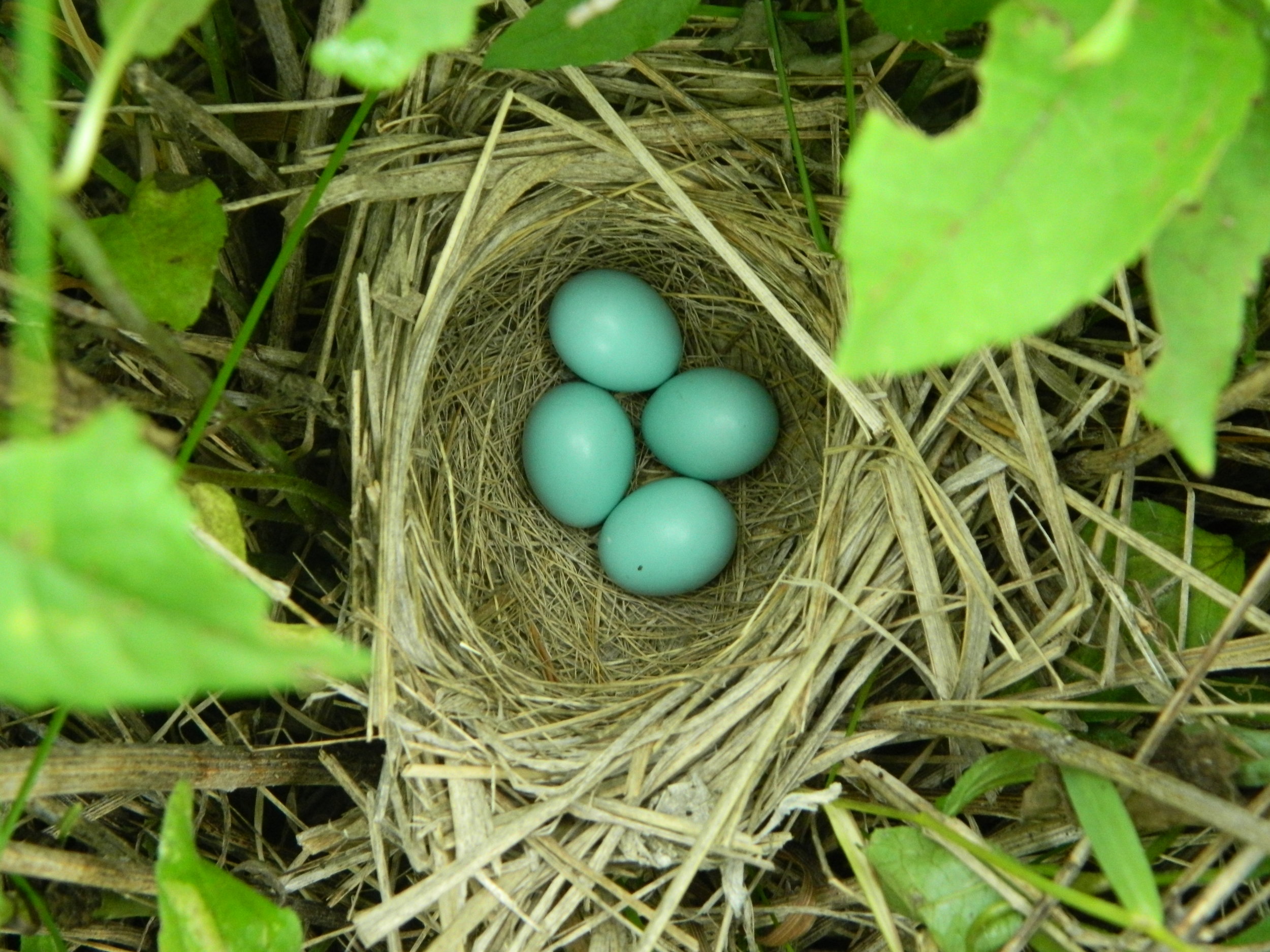

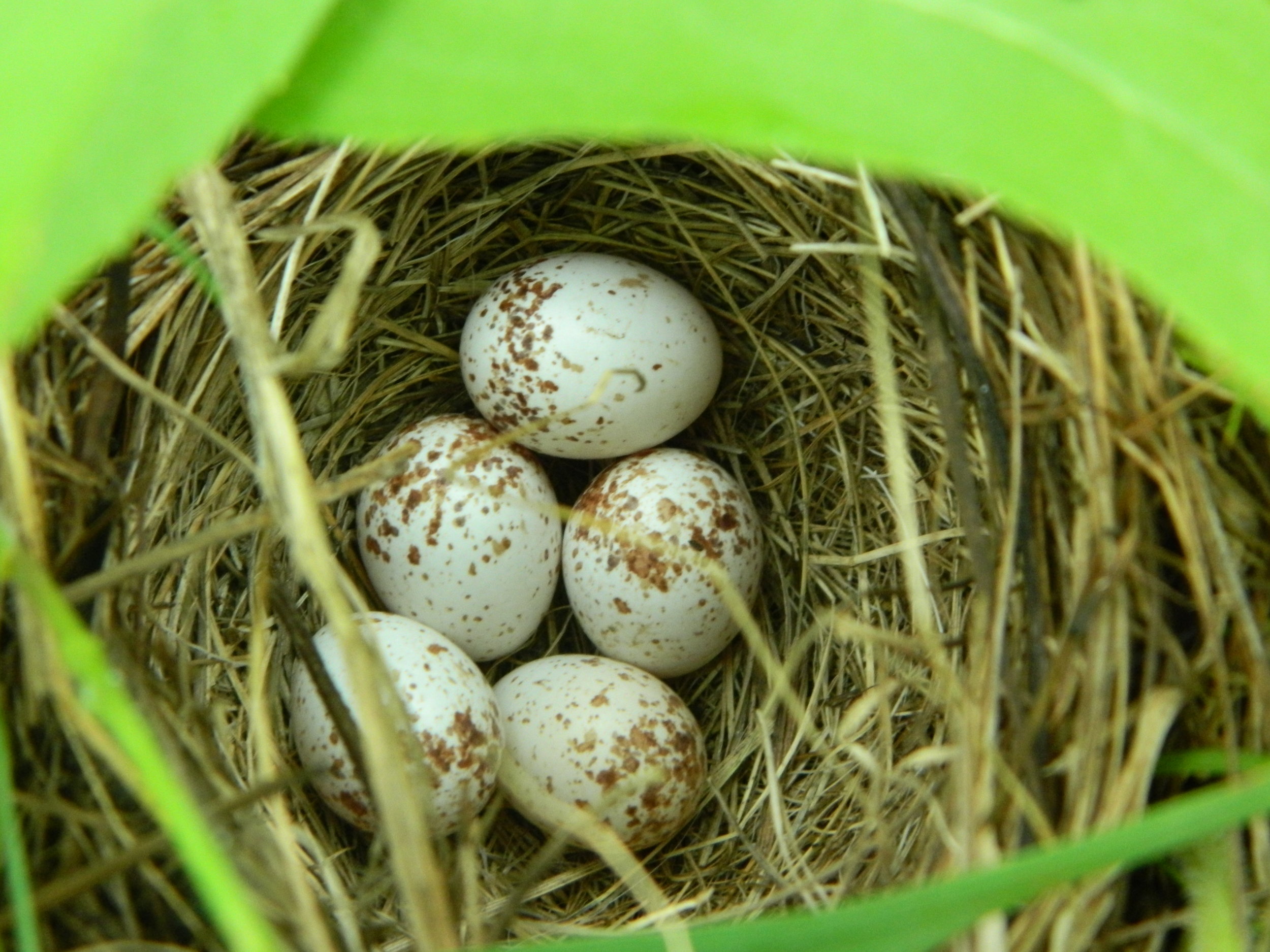
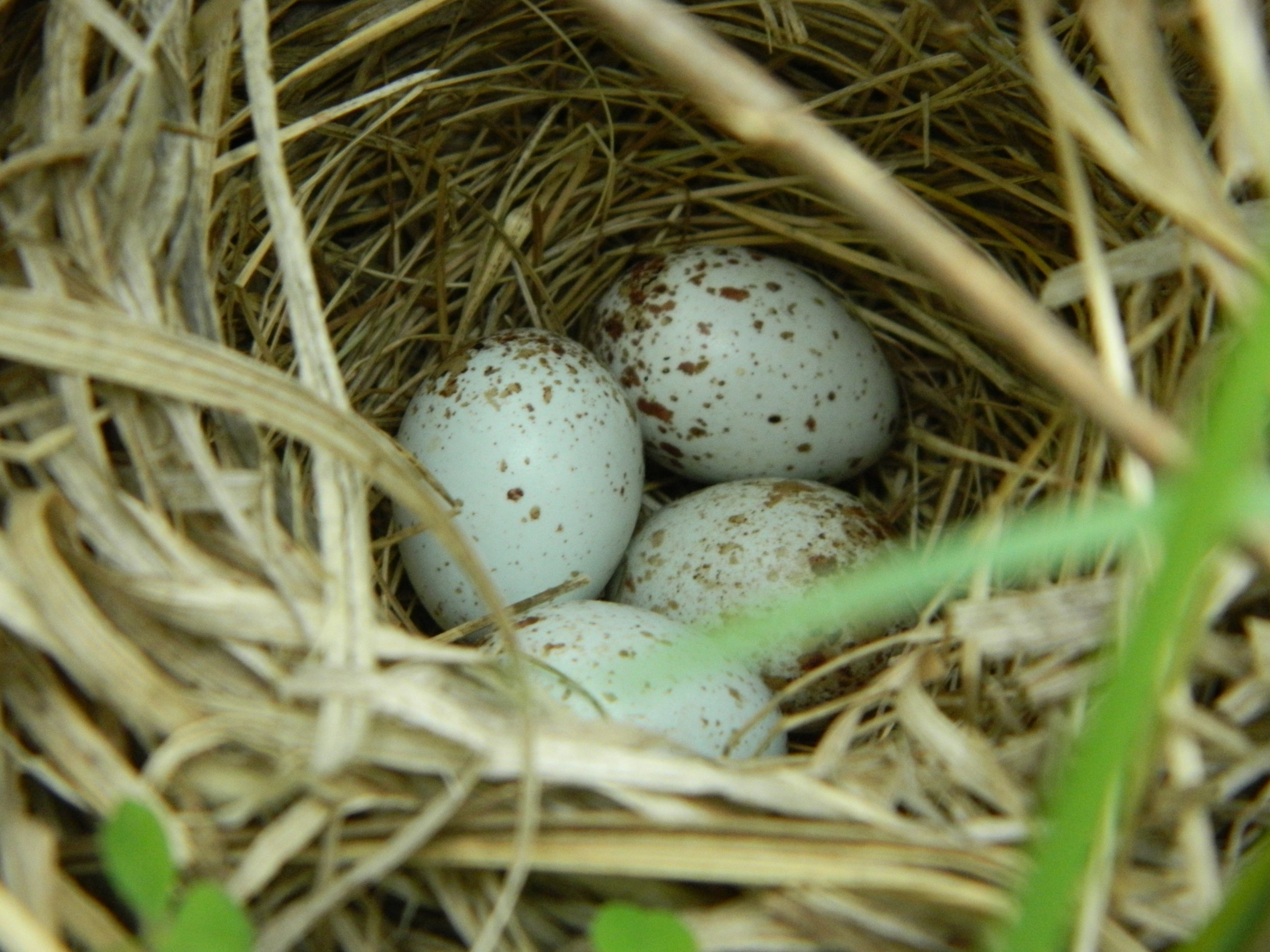
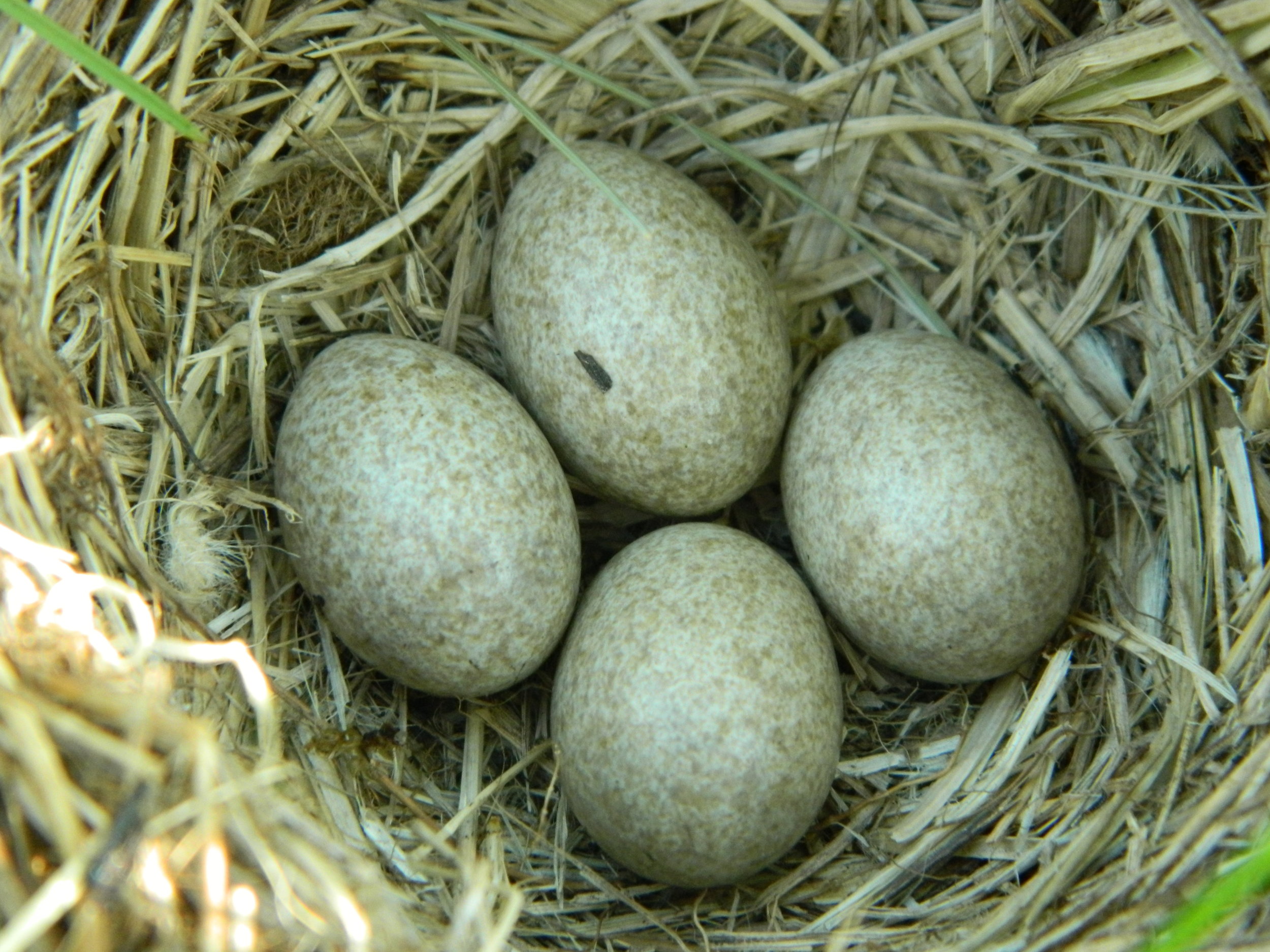
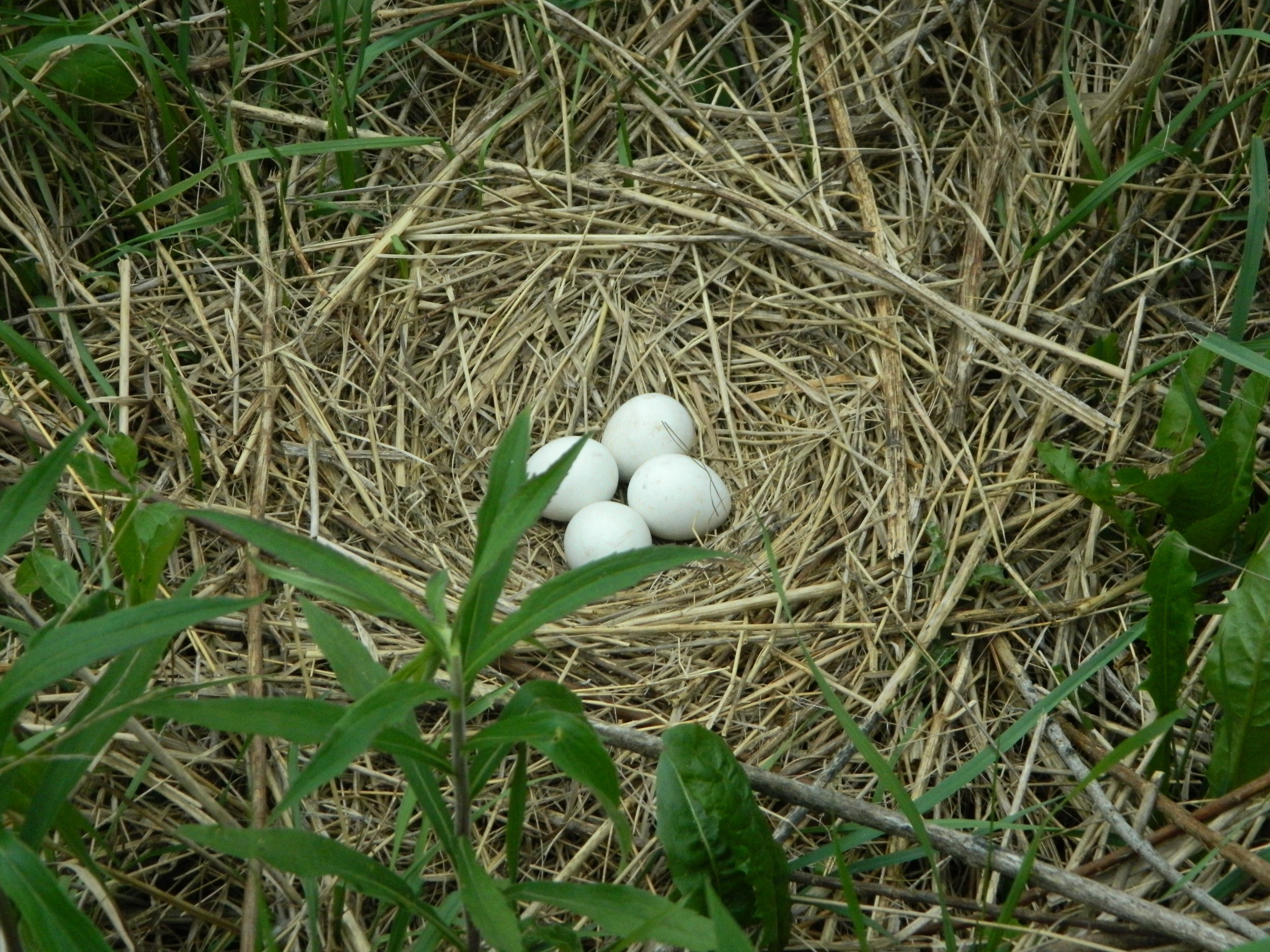
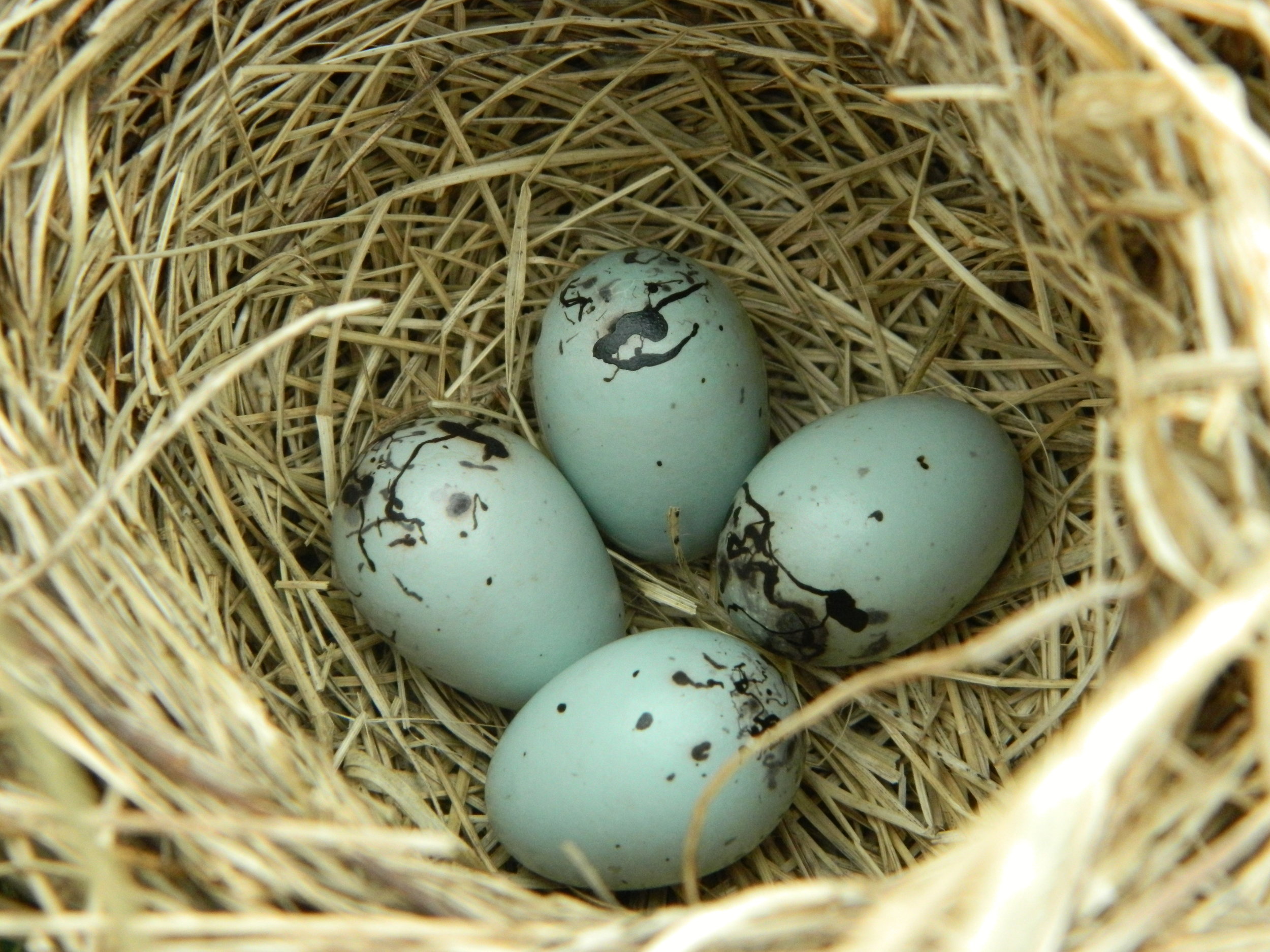
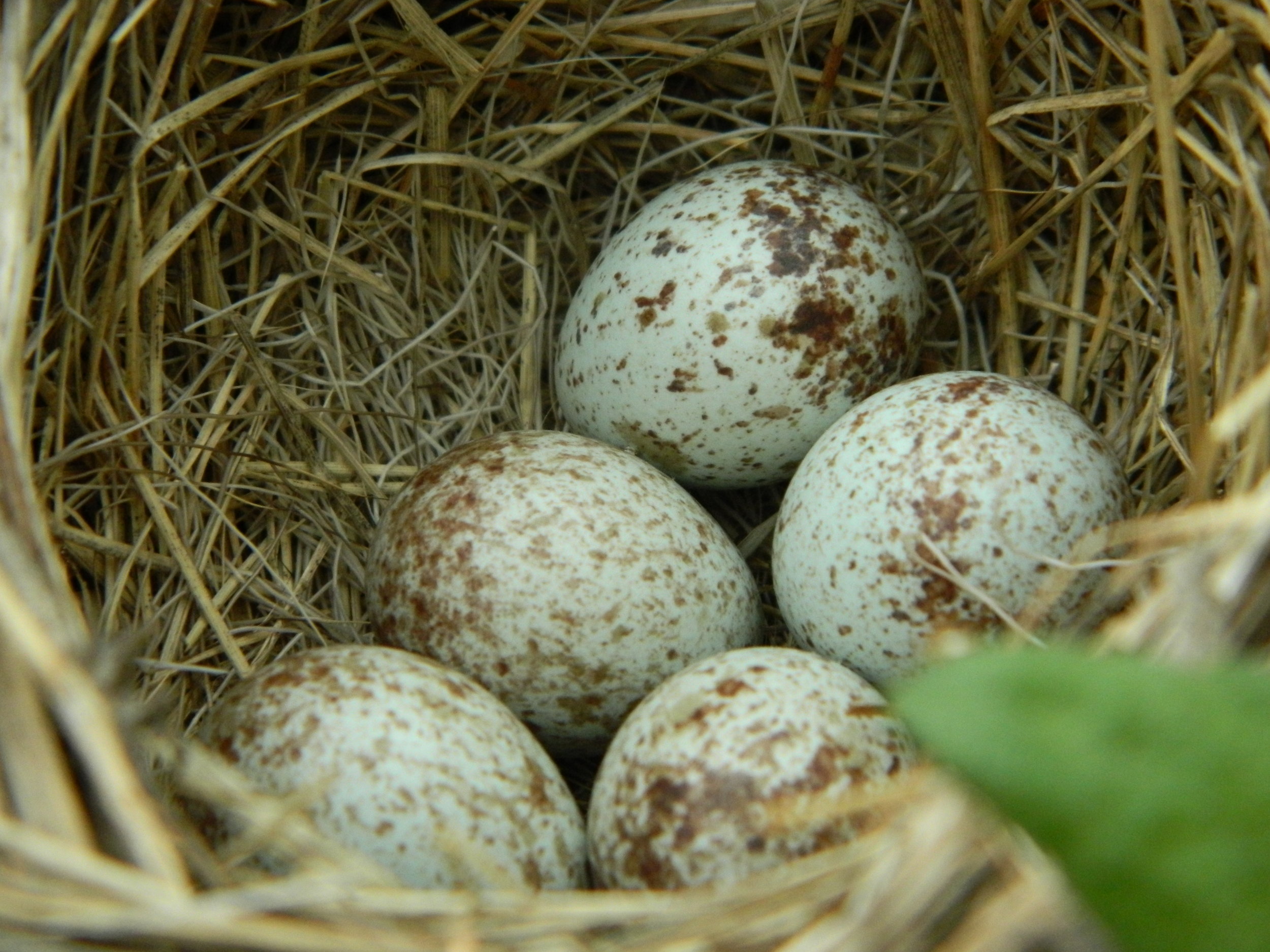
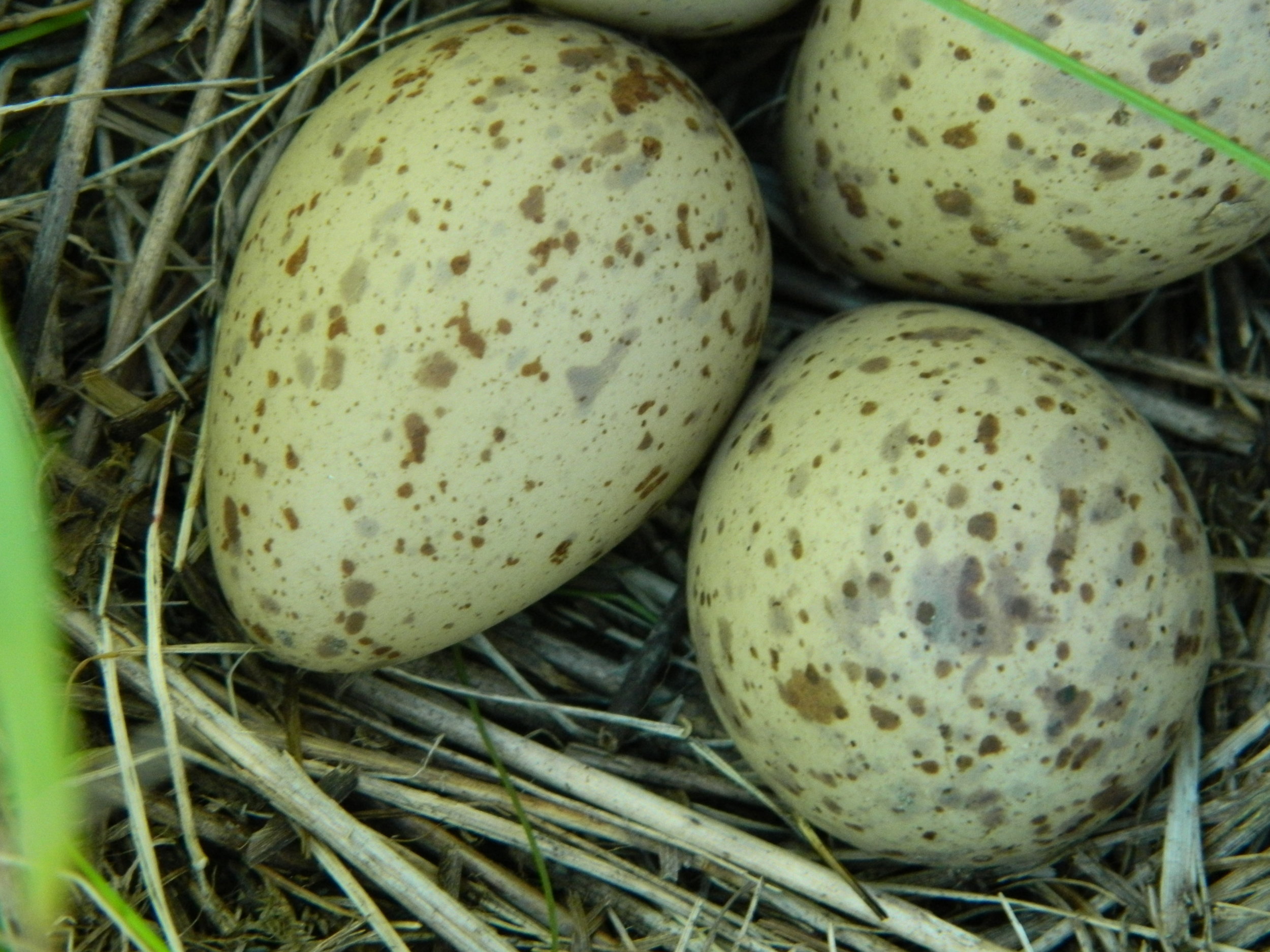
Field guides or descriptions of birds’ eggs typically only depict the most common coloration: the average egg. This is only a small part of the story, though. There is so much individual variation in egg patterning within a species that sometimes the “average” egg is vastly different from the outliers.
Red-winged blackbirds are a great example of this. The background color of their eggs can be grayish to blueish green. The markings on their eggs can be brown to black, and can be small speckling, blotches, or scrollwork- either thickly or sparsely patterned. A gray egg with a few brown blotches on it looks wildly different from a blue egg with black scrollwork - but they both hold red-winged blackbird chicks.
Common yellowthroats are another bird with lots of individual variation in their egg patterning. They can have white or creamy white backgrounds- some are even light pink! The markings on the egg may be gray, brown, or reddish brown. The markings may be just a few dots or a ring of heavy blotches surrounding the wider end of the egg.
Common yellowthroat egg variation on top, with red-winged blackbird eggs on the bottom. Artwork by Carolyn Byers
Next time we’ll discuss incubation behavior-- and share our first nest videos with you!
For those of you interested in brushing up on basic egg facts or reading more about egg color, here are a collection of articles and videos for you to peruse:
Cornell All About Birds: The Beauty and Biology of Egg Color
Cornell All About Birds: How Many Eggs does a Bird Lay?
Science: Cracking the Mystery of Egg Shape
Mental Floss: How do baby birds breathe inside their egg?
VIDEO-- FLIGHT: The Genius of Birds: Embryonic Development
VIDEO-- Skunk Bear NPR: How Birds Get Oxygen Inside their Eggs
* * * * * * * * * * * * * * * * * * * * * * * *
Dickcissels are a beautiful, migratory grassland bird that benefits from the Migratory Bird Treaty Act. Photo by Kelly Colgan Azar
This summer, to celebrate Year of the Birdand 100 years of bird conservation under the Migratory Bird Treaty Act, we’ll be posting regular articles about grassland bird nesting ecology. My M.S. thesis focused on grassland bird nesting ecology, and I’m excited to share my knowledge—and stories from the field- with you! We’ll go into the nest to learn about chick behavior, adult sleep habits, feeding and fledging. We’ll discuss predation and learn about how adult birds respond to different predators. You’ll get to see beautiful photos of nests, eggs, and chicks, as well as video footage straight from the nest! Best of all, the next time you’re out hiking in your favorite Wisconsin prairie, you’ll feel a bit closer to the birds you love.
If you’re interested in reading more and can’t wait for the next post, you can read more about my thesis work here.
Stay tuned for our next edition of Into the Nest, coming soon!
Written by Carolyn Byers, Madison Audubon education director
Gill, Frank B. 2007. Ornithology, third edition. W. H. Freeman and Company, New York, NY.
Harrison, C. J. O. 1978. A Field Guide to the nests, eggs and nestlings of North American birds. Toronto: Collins.












